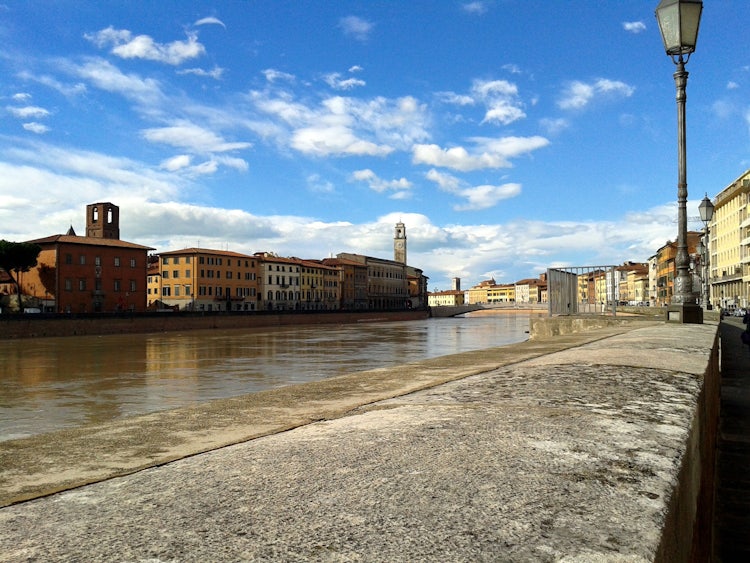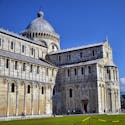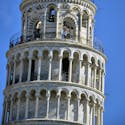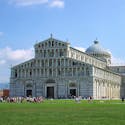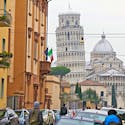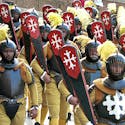The 19th century name for the piazza "Piazza dei Miracoli" or Square of Miracles, was not given by chance to wonderfully white square where the Leaning Tower sits. Gabriele D’Annunzio, famous Italian writer and poet coined the new name for the piazza del Duomo, finding the perfect term to describe the amazement and awe that this place inspires in all who visit.
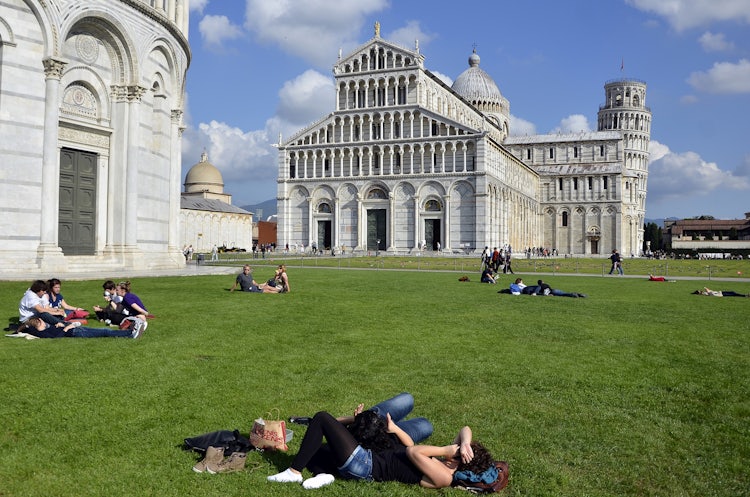
A leaning tower amidst a square of miracles
The Square of Miracles has gained international fame thanks to its leaning tower and its peculiar inclination, but actually the square is home to other marvellous monuments: the Cathedral, the Baptistery and the cemetery, representing the life cycle, that have a pure whiteness in common standing out over the lush green ground. You can read more about the entire Square of Miracles here.
If you get to Pisa by train (the best option) and want to visit the Square of Miracles right away, get off at the San Rossore rail station, less than a 10 minutes walk far from the square. As you pass through the tiny gate along the walls that surround Pisa's historical center, you’ll be immediately struck by the sight that appears before your eyes: the massive square stands strong and proud leaving you open-mouthed.
If you get there by walking along Via Santa Maria, that means you’ve passed through the old center and along the lungarni. You won’t be able to catch sight of the square until you get closer and, believe me, what suddenly appears before your eyes is so impressive that you'll also stop to gaze in wonderment.

Restoration
What immediately catches every one's attention is the Leaning Tower, standing at over 50 meters high. It is actually the bell tower to the cathedral standing off to its side. It is known worldwide for its unintended tilt to one side, due to the weak nature of the ground below it, inadequate to support the tower's weight from the very beginning. Built between the 12th and 13th centuries, the tower started leaning before it was even finished!
Its inclination, which has been getting bigger over the years, reached a dangerous level around 20 years ago. It was 4,50 meters off axis and so in 1990 the tower was closed to the public. What to do? Discussions ranged from "fixing" it and thus straightening it right back out to just creating a system to catching it from falling. After more than 10 years of corrective reconstruction and stabilization efforts, the goal was to strengthen the base of the tower and to straighten it up just a little bit so as to prevent the complete collapse of the tower under its own weight (for at least another 3 centuries). The leaning tower reopened to the public on December 2001.
Today, the tower appears even brighter than ever. Wonder why? The reason is that after fixing the base of the tower, experts then started to restore the marble back to its original white color, both inside and out. Renovation and cleaning of the seven arcades and the bell chamber were carried out over nine years and performed during the night as to allow visitors to go up during the daily opening hours. After this long makeover, the tower shines brightly and welcomes hundreds of visitors every day.
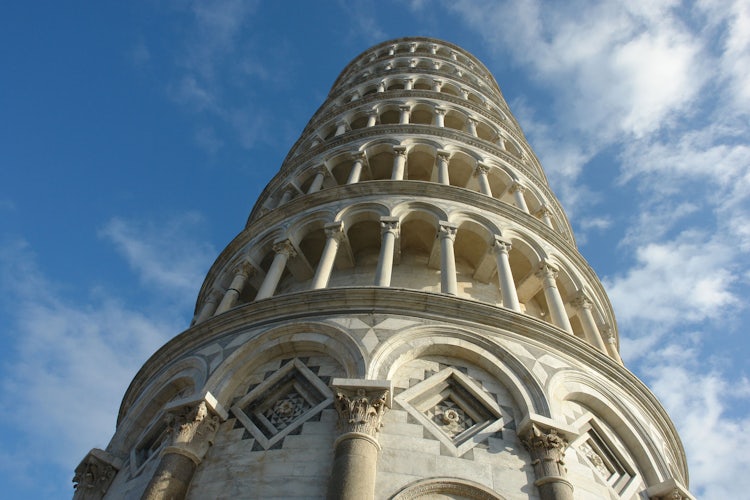
When I go back to Pisa, I reminisce of my student days here: I go lie down right under the tower, staring at what is defined as a challenge to gravity, and think. About how many times I’ve sat down by the tower, how many times I’ve ran across the square to catch the train, how many times I’ve quickly looked at those miracles and thought is it just chance or the misunderstood architect genius (there are those who believe that the builders intentionally built the tower with its peculiar tilt) that has played such an important role in Pisa's history, changing its fate? I’m not saying the square wouldn’t be a square of miracles without its leaning tower, but it would certainly be a little less fascinating if it was straight.
So how would it be otherwise, would it be crowded with tourists? It certainly would, as the cathedral, the baptistery and cemetery are wonderful examples of Gothic and Romaneque architecture and are beauties to admire. What would be missing would be the crowds of people taking pictures of friends and relatives in strange and original postures in the "act" of supporting the collapse of the tower. Likely all or at least many of the souvenir stands along the square, selling every kind of tower miniatures (white, colored, with lights, inside a snowball, and more) would not be there. Does it matter? The leaning tower is definitely an essential part of the square.
Atop the tower, like Galileo the scientist

If you’re at the Square of Miracles, you need to absolutely climb to the very top of the tower! The arcades with their characteristic columns and the bell chamber atop feature a helicoidal marble stairway composed of 293 steps... with no elevator! But I assure you the amazing view from atop the tower deserves all the effort of the climb.
You should also know, if it might help bear the physical effort, that the famous Italian scientist Galileo Galilei, is said to have performed gravity experiments from the tower to demonstrate if the speed of descent of bodies could be independent of their mass (there’s a commemorative stone on the tower documenting this - find it!)
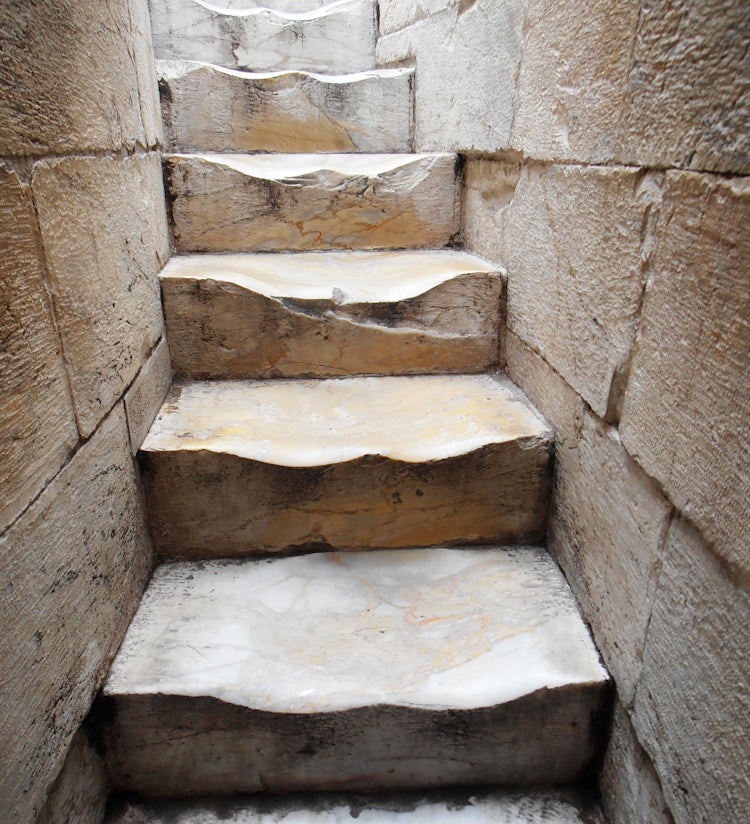
Once you're at the top, what you see just before your eyes is simply amazing: a breathtaking panorama overlooking the typical red roofs of this old Sea Republic, embracing in one glance the entire marvellous city and its surroundings. All of your feelings will be swirling in special emotions... particularly if you suffer from vertigo!
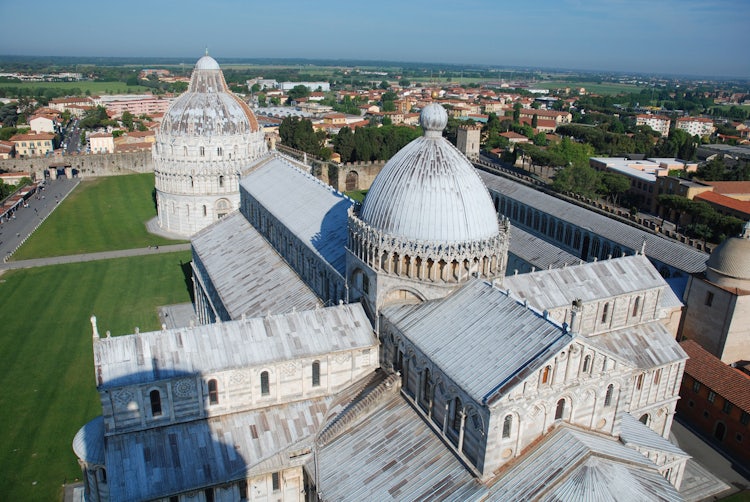
What about the other leaning towers in Pisa?
Did you even know that the Leaning Tower is not the only leaning tower in Pisa? Yes, you’ve understood correctly, there are at least two more bell towers featuring a slight, although less visible tilt, due to the sandy and clayish subsoil under all of Pisa. Walk all along Via Santa Maria until the end and you’ll find close to the lungarni the Church of San Nicola. Carefully study the bell tower and you will notice the tilt. Then head on to Via delle Piagge (the Eastern lungarno) to the Church of San Michele degli Scalzi, whose bell tower is about 5 degrees off to one side.
Ticket information and opening times
The tower is open all year round with different opening times depending on the season (from April to September it's open till 8/9 pm with special evening openings till 10pm). Guided and group visits - for a maximum 40 people - may be booked in advance. Children under 8 years cannot visit the tower for safety reasons and children under 18 years must enter with an adult. If you buy your tickets online, you'll have direct access to the tower avoiding long queues. Online tickets can be purchased from 20 days to 1 day before the date of the visit. An important note for families: kids under 8 cannot climb the tower for security reasons. Make sure to plan accordingly.
How to get to Pisa
The best way to get to Pisa is by train: there are two rail stations in Pisa where you may take trains to and from all the main Tuscan localities. The Centrale Station, moreover, is well-connected with Pisa airport. You may also take a bus to/from Lucca or other towns close by, while I strongly suggest you avoid car if possible. The old city center is closed to traffic and almost all car parks are not free of charge... but you will find parking if needed. Follow signs to the "Piazza dei Miracoli" and to the P parking signs to avoid getting anywhere near the ZTL (limited traffic zone).
